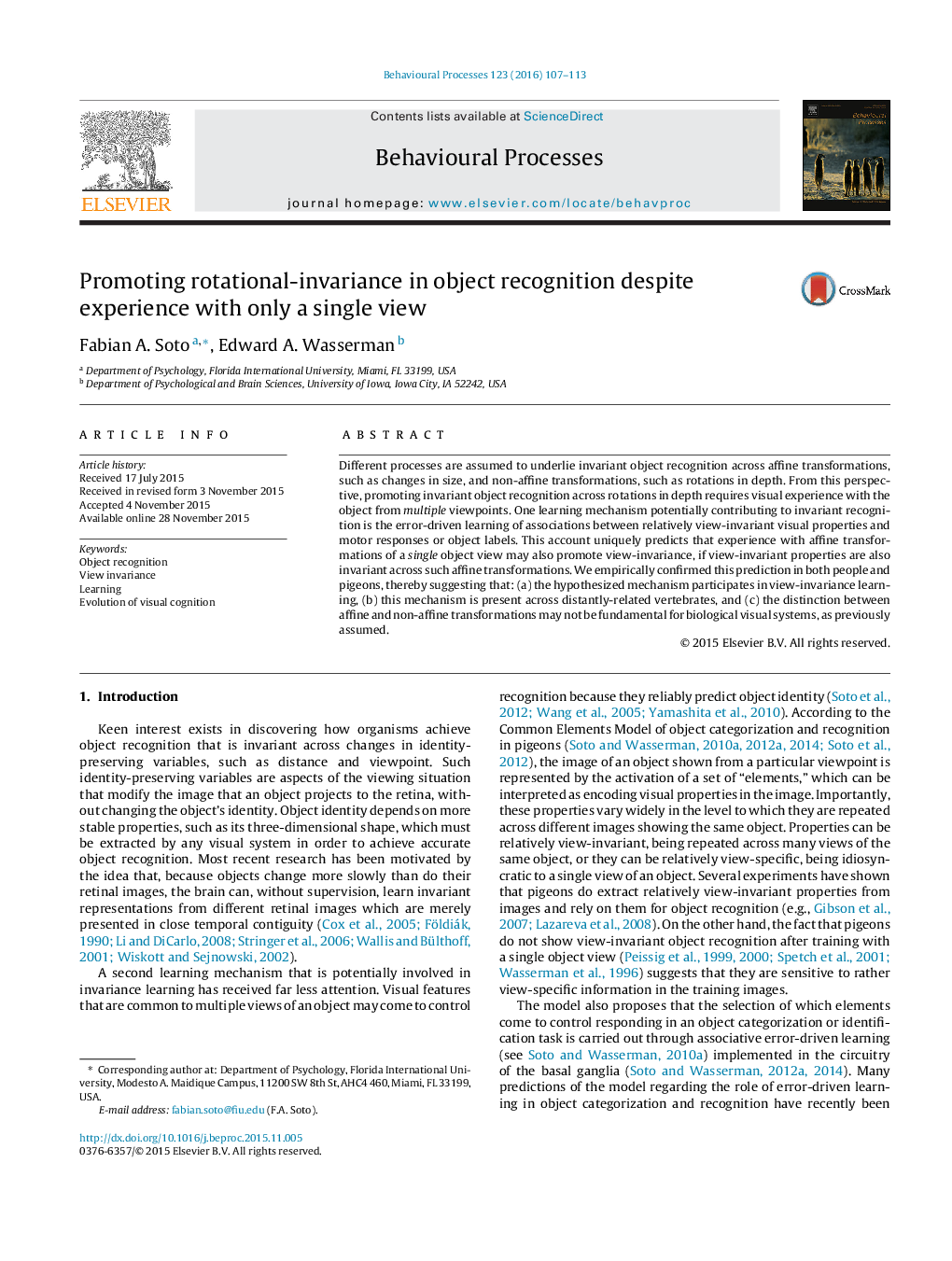| Article ID | Journal | Published Year | Pages | File Type |
|---|---|---|---|---|
| 2426422 | Behavioural Processes | 2016 | 7 Pages |
Different processes are assumed to underlie invariant object recognition across affine transformations, such as changes in size, and non-affine transformations, such as rotations in depth. From this perspective, promoting invariant object recognition across rotations in depth requires visual experience with the object from multiple viewpoints. One learning mechanism potentially contributing to invariant recognition is the error-driven learning of associations between relatively view-invariant visual properties and motor responses or object labels. This account uniquely predicts that experience with affine transformations of a single object view may also promote view-invariance, if view-invariant properties are also invariant across such affine transformations. We empirically confirmed this prediction in both people and pigeons, thereby suggesting that: (a) the hypothesized mechanism participates in view-invariance learning, (b) this mechanism is present across distantly-related vertebrates, and (c) the distinction between affine and non-affine transformations may not be fundamental for biological visual systems, as previously assumed.
